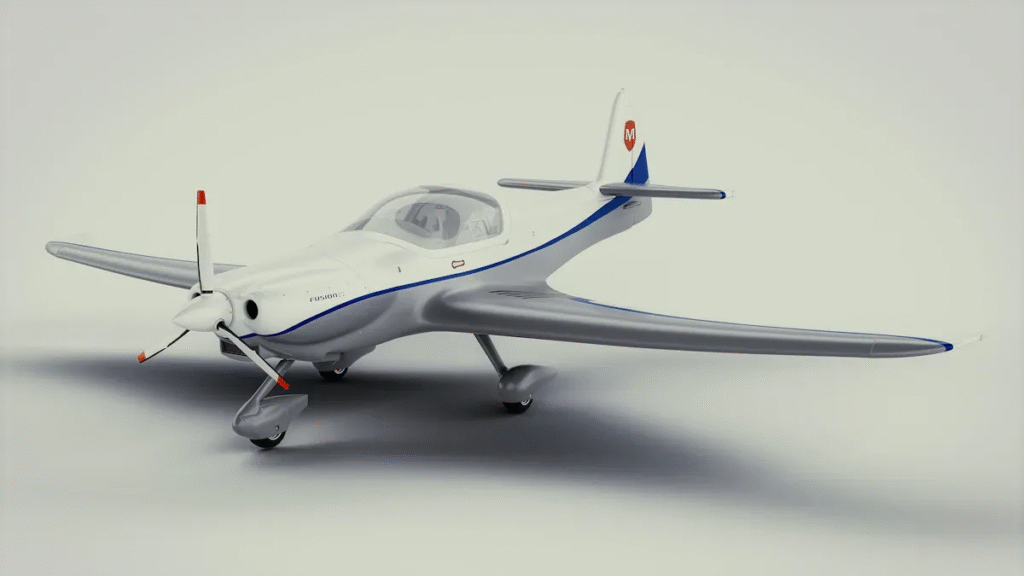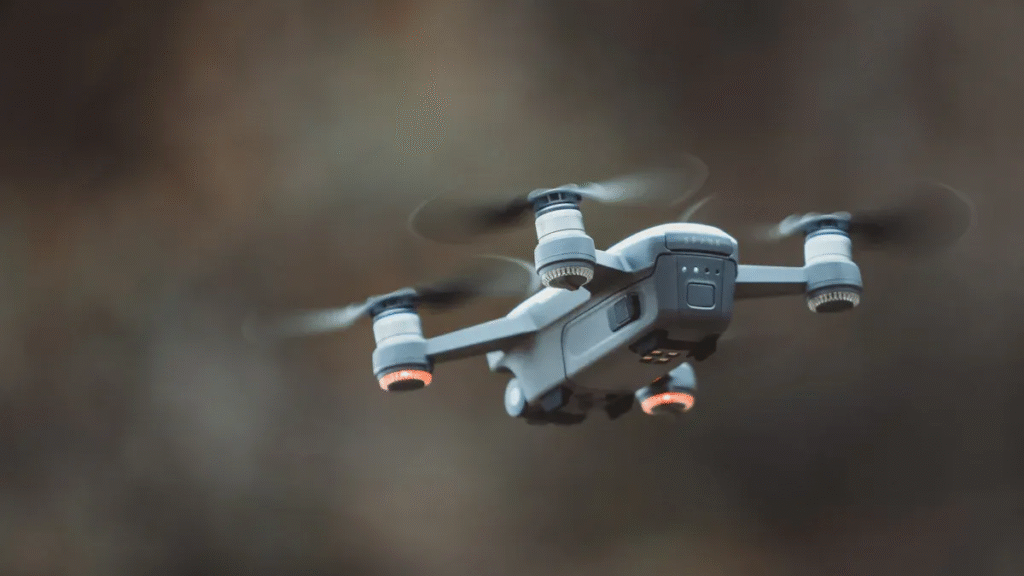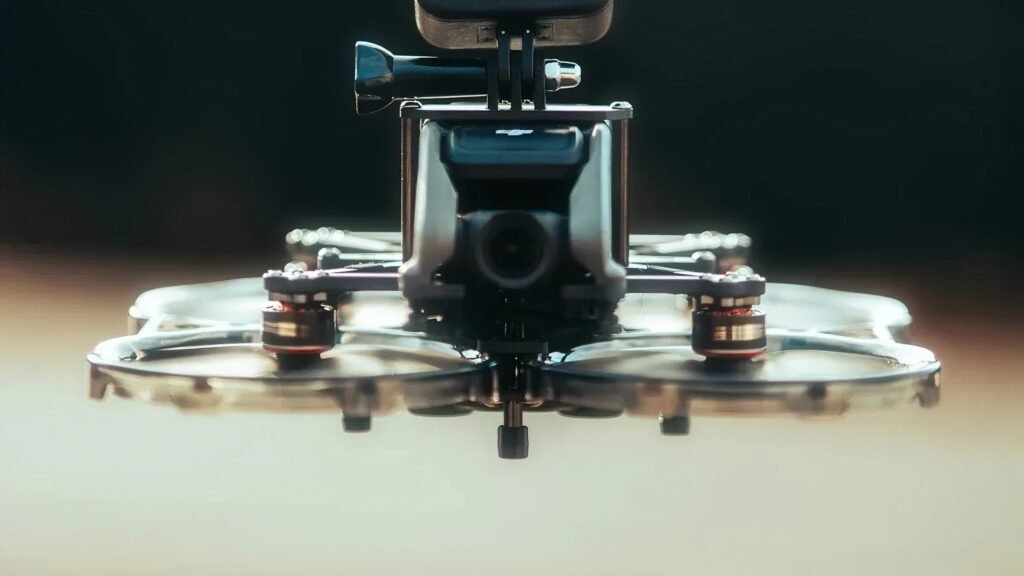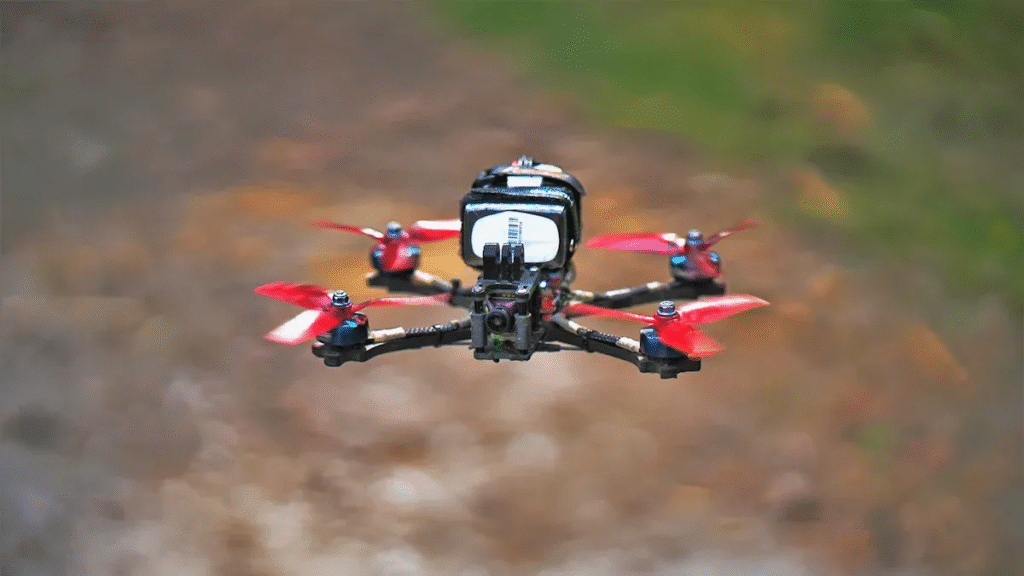To optimize your RC plane’s performance, you need to match your drone motors’ RPM to your specific model. There is no universal minimum RPM because each plane’s requirements differ based on weight, wing size, and propeller setup. The table below shows how motor Kv, wing area, and propeller pitch speed can vary widely:
| Parameter | Value/Range | Explanation/Implication |
|---|---|---|
| Motor Kv | 650 rpm/V (example) | Different motors have varying Kv values affecting RPM at given voltage. |
| Wing Area | 1175 sq in | Larger or smaller wing areas affect stall speed and required pitch speed. |
| Propeller Pitch Speed | 35-40 mph to >60 mph | Prop pitch speed varies with prop size and motor setup, affecting RPM needs. |
| Model Stall Speed | >25 mph | Stall speed differs by model, influencing minimum effective pitch speed and RPM. |
Selecting the right RPM ensures you achieve the best efficiency, reliable thrust, and safe operation for your flight.
Key Takeaways
- Match your motor’s KV rating and battery voltage to your plane’s weight and propeller size for the best RPM and flight performance.
- Use the formula RPM = KV × Voltage to estimate motor speed and adjust your setup accordingly to avoid overheating and inefficiency.
- Choose propellers that fit your motor and plane type; larger, low-pitch props work well for heavy planes, while smaller, high-pitch props suit fast, agile models.
- Aim for a proper thrust-to-weight ratio to ensure safe takeoff, good climb, and smooth flight; adjust throttle and check your battery and ESC limits.
- Perform a thorough pre-flight check including motor and propeller inspection, battery voltage verification, and propeller balancing to prevent issues and improve efficiency.
Drone Motors and RPM Basics
What Is RPM?
RPM stands for revolutions per minute. This measurement tells you how many full turns the motor shaft completes in one minute. When you look at drone motors, RPM gives you a direct sense of how fast the propeller spins. Faster RPM means the propeller moves more air, which can increase thrust and speed. However, higher RPM also leads to more current draw and heat.
| Factor | Explanation and Impact on RPM and Drone Performance |
|---|---|
| RPM Definition | RPM (revolutions per minute) measures how many full rotations a motor shaft makes in one minute. |
| KV Rating | Indicates RPM per volt supplied. Example: 1000KV motor at 10V spins at 10,000 RPM; 2300KV motor at 14.8V spins at 34,040 RPM. Higher KV means higher RPM but less torque and more current draw. |
| Battery Voltage | Directly affects RPM via formula: RPM = KV × Voltage. Example: 2300KV motor with 4S (14.8V) battery reaches 34,040 RPM; with 6S (22.2V) battery reaches 50,940 RPM. Higher voltage increases speed but also heat and current. |
| Propeller Size | Larger propellers require more torque, lowering max RPM; smaller props spin faster, ideal for racing drones. Prop size affects thrust, efficiency, and motor strain. |
| Weight/Payload | Heavier payloads require higher RPM or larger props to generate sufficient thrust. High RPM motors with heavy payloads risk overheating unless matched properly. |
Understanding KV Rating
KV rating is a key number you see on drone motors. It tells you how many RPM the motor will spin for each volt you supply. For example, a 2300KV motor with a 14.8V battery will spin at about 34,040 RPM with no load. Lower KV motors spin slower but provide more torque, which is ideal for larger propellers and heavier planes. Higher KV motors spin faster but have less torque, making them better for lightweight, agile RC planes.
- Dyno tests show that lower KV motors deliver higher peak torque and efficiency, especially when paired with larger props.
- Racing drones often use high KV motors for quick acceleration, while photography drones use lower KV motors for stability and smooth flight.
Tip: Always match your motor’s KV rating to your propeller size and the type of flying you plan to do. Lower KV motors work best for endurance and heavy-lift applications.
Voltage and RPM
Voltage directly controls how fast your drone motors spin. The formula is simple:
Motor RPM = KV rating × Battery Voltage
If you increase the battery voltage, you increase the RPM. For example, a 2300KV motor on a 4S (14.8V) battery can reach about 34,040 RPM, but on a 6S (22.2V) battery, it can reach 50,940 RPM. However, higher voltage also means more heat and current draw, which can stress your electronics.
- Case studies show that voltage interruptions or drops can cause immediate loss of stability and performance in drone motors.
- Advanced monitoring can detect subtle changes in RPM due to voltage fluctuations, helping you avoid damage or crashes.
Typical RPM ranges for drone motors in RC planes fall between 5,000 and 18,000 RPM under load. Lower KV motors paired with larger props often operate at the lower end of this range, providing better efficiency and longer flight times.
Key Factors for RPM Selection

Plane Weight
You must consider your RC plane’s weight when selecting the optimal motor RPM. Heavier planes require more thrust to achieve stable flight and safe takeoff. If you choose a motor with too low an RPM for your plane’s weight, you risk poor climb performance and sluggish handling. On the other hand, excessive RPM can lead to wasted energy and overheating.
- Researchers have collected over 140 static thrust data points from various sources, including hobbyist reviews and manufacturer tests. These data points help refine thrust estimation equations by factoring in propeller diameter, pitch, and RPM.
- Larger diameter propellers with lower pitch often deliver better efficiency at a given RPM, which is especially important for heavier planes.
- You can use real-time RPM measurements and thrust estimates to match your plane’s weight with the right RPM setting. This approach ensures your motor produces enough thrust without sacrificing efficiency.
- Dynamic thrust equations, corrected through real-world testing, show how propeller size and RPM directly affect your plane’s ability to stay airborne.
Tip: Always measure your plane’s weight with all components installed. Use this value as the baseline for calculating the minimum thrust and RPM your setup needs.
Propeller Size
Propeller size plays a crucial role in determining the required RPM for your RC plane. The diameter and pitch of your propeller affect how much air you move and how efficiently you convert motor power into thrust.
- Larger propellers generate more thrust at lower RPMs, making them ideal for heavier or slower-flying planes.
- Smaller propellers spin faster and suit lightweight, agile models that need quick acceleration.
- The ratio of propeller diameter to pitch influences efficiency. Tests show that props with a larger diameter and lower pitch often provide better performance for endurance and stability.
You should also consider the compatibility of your motor, battery, and electronic speed controller (ESC) with your chosen propeller. Use a motor thrust stand to measure thrust, RPM, temperature, and current draw during bench tests. This process helps you identify the most efficient propeller and RPM combination for your specific setup.
Note: Iterative testing with different propellers and motors will help you fine-tune your RPM selection for optimal flight time and stability.
Thrust-to-Weight Ratio
The thrust-to-weight ratio is one of the most important metrics for RC plane performance. This ratio compares the total thrust your motor and propeller produce to the weight of your plane. It determines how easily your plane can take off, climb, and perform aerobatic maneuvers.
| Thrust-to-Weight Ratio Range | Description / Flight Characteristics |
|---|---|
| ~0.4:1 | Minimum thrust for flight; difficult to get airborne |
| 0.54:1 | Large jet example; still flyable |
| 0.6:1 to 0.9:1 | Typical for scale jets; good scale flight |
| 0.77:1 | Fully aerobatic, scale flight at half throttle |
| 0.9:1 to 1.1:1 | Lively, more exciting flying |
| 1.2:1 | Powerful setups, common in some discussions |
| 1.5:1 | Very powerful, sometimes difficult to manage |
You should aim for a thrust-to-weight ratio that matches your flying style and plane type. Scale models often perform best with ratios between 0.6:1 and 0.9:1, while aerobatic or high-performance planes may need ratios above 1:1. Full-scale aircraft typically use lower ratios, but RC planes benefit from extra thrust for safety and maneuverability.
Managing throttle input is essential for realistic flight and to prevent excessive current draw or overheating. Always verify that your battery and ESC can handle the maximum current your setup demands.
When you combine careful weight measurement, propeller selection, and thrust-to-weight calculations, you create a solid foundation for optimizing your drone motor RPM. Bench testing, efficiency ratings, and real-world flight observations will help you refine your setup and achieve the best possible performance.
RPM Calculation

Formula Overview
You can calculate your motor’s RPM using a simple formula:
RPM = KV × Voltage
This formula tells you how fast your motor will spin at a given voltage. KV stands for the number of revolutions per minute (RPM) your motor produces for each volt you supply. For example, if you use a 1000 KV motor with a 12V battery, your theoretical no-load RPM will be:
RPM = 1000 × 12 = 12,000 RPM
Wil Selby’s research and simulation results confirm this relationship. In his experiments, a motor with a loaded KV of 700 RPM/V and a supply voltage of 5.35 volts produced a measured propeller speed of about 3745 RPM. This closely matches the calculated RPM, proving the formula’s accuracy for RC planes. Gabriel Staples also demonstrates that live RPM measurements on brushless motors align with this formula, even when you factor in real-world loads.
Tip: Always use the loaded KV value for more accurate RPM predictions, since real-world conditions (like propeller load) reduce the actual RPM compared to the no-load value.
Choosing KV and Voltage
Selecting the right KV and voltage combination is crucial for matching your motor’s RPM to your RC plane’s needs. You should start by considering your plane’s weight, desired flight style, and propeller size.
Practical Examples
Let’s look at a few common setups:
| Motor KV | Battery Voltage | Theoretical No-Load RPM | Typical Use Case |
|---|---|---|---|
| 850 | 11.1V (3S) | 9,435 | Large, heavy trainer planes |
| 1200 | 14.8V (4S) | 17,760 | Sport or aerobatic planes |
| 2300 | 11.1V (3S) | 25,530 | Lightweight racing drones |
If you want to fly a heavy trainer, you might choose an 850 KV motor with a 3S battery. For a fast, agile plane, a 2300 KV motor with a 3S battery delivers much higher RPM. Always check your electronic speed controller (ESC) and battery ratings to ensure they can handle the current and voltage.
How Propeller Size and Pitch Affect Required RPM
Propeller size and pitch play a major role in determining the RPM you need for optimal performance. Engineering tests in wind tunnels show that increasing propeller pitch significantly raises thrust, torque, and power at a given RPM. This means you need higher RPM to take full advantage of a high-pitch propeller. In contrast, changing the diameter has a smaller effect on efficiency and required RPM.
- Larger diameter, lower pitch: These props generate more thrust at lower RPM. They suit heavier planes and endurance flying.
- Smaller diameter, higher pitch: These props need higher RPM to generate enough thrust. They work best for speed and aerobatic models.
| Propeller Type | Required RPM | Flight Characteristics |
|---|---|---|
| 12×6 (large, low pitch) | Lower | Stable, efficient, good for heavy planes |
| 8×8 (small, high pitch) | Higher | Fast, agile, suited for racing |
Measured RPM data from wind tunnel tests confirm that increasing pitch shifts the maximum efficiency to a higher RPM. You should select a propeller that matches your motor’s RPM range and your plane’s mission profile.
Note: Always test your setup on the ground with a wattmeter and tachometer. This helps you verify that your drone motors, ESC, and battery work safely together at your chosen RPM.
By understanding the relationship between KV, voltage, and propeller characteristics, you can fine-tune your RC plane for the best balance of thrust, efficiency, and flight time.
Common Mistakes
High KV Issues
You might think that choosing a high KV motor always gives you more speed. In reality, high KV motors spin faster but produce less torque. If you use a high KV motor with a large propeller or a heavy RC plane, you risk overheating and damaging your electronics. High KV motors also draw more current, which can drain your battery quickly. You should match your motor’s KV rating to your plane’s size and flying style. For endurance or heavy-lift planes, select a lower KV motor. This choice helps you avoid wasted energy and keeps your drone motors running efficiently.
Propeller Mismatch
Selecting the wrong propeller size or using an imbalanced propeller can cause serious problems. Imbalanced propellers increase noise and vibration, especially at higher RPMs. This not only affects performance but also shortens the lifespan of your drone motors. The table below summarizes research findings on propeller imbalance:
| Study (Year) | Method of Inducing Imbalance | Measurement Focus | Key Findings |
|---|---|---|---|
| Semke (2021) | Removed material or added tape to propeller blades | Noise level (dB), Vibration (acceleration) | Imbalanced standard propellers increased noise by ~4 dB (5%) and vibration; effects more pronounced at higher RPMs. |
| Iannace (2019) | Added paper tape to one or both blades of a propeller | Noise level (dB Lin) | No significant noise increase; balanced propellers slightly noisier by 1.4 dB Lin. Unique noise signatures detected by neural network. |
| Pechan (2015) | Removed material (sanding), added protuberances, notches | Noise level (LZmax) at 3000-5500 RPM | Damaged propellers generally produced equal or higher noise; imbalanced propeller produced more noise at higher frequencies at 5000 RPM. |
You should always balance your propellers and choose the right size for your setup. This step ensures smooth operation and better flight performance.
Ignoring Voltage Effects
Many pilots overlook the impact of voltage on motor RPM. The speed of your drone motors depends on both the KV rating and the voltage you supply. For example, a 2300 KV motor with a 14.8V battery spins at 34,040 RPM without load. If you ignore voltage, you risk running your motors at the wrong speed, which leads to poor efficiency and possible damage. Always check your battery voltage and match it to your motor’s specifications. This practice keeps your setup safe and efficient.
Tip: Double-check your battery and motor specs before every flight. This habit prevents costly mistakes and keeps your RC plane performing at its best.
Best Practices
Pre-Flight Checklist
Before you launch your RC plane, you should follow a systematic checklist to ensure optimal motor RPM and safe operation. This approach helps you catch issues early and prevents costly mistakes.
- Inspect the Motor and Propeller
Check for any visible damage or imbalance. Spin the propeller by hand to confirm smooth rotation. - Verify Battery Voltage
Use a voltmeter to confirm your battery delivers the expected voltage. Low voltage can reduce RPM and thrust. - Check Connections
Ensure all wires, connectors, and solder joints are secure. Loose connections can cause power loss or erratic RPM. - Test Throttle Response
Power up your transmitter and receiver. Gradually increase throttle and listen for abnormal sounds or vibrations. - Monitor Current and Temperature
Use a wattmeter to measure current draw at different throttle levels. Touch the motor and ESC briefly to check for overheating. - Balance the Propeller
Use a prop balancer to minimize vibration. Balanced props improve efficiency and extend motor life. - Confirm Thrust-to-Weight Ratio
Weigh your plane and compare it to the measured thrust. Aim for a ratio that matches your flight style.
Tip: A thorough pre-flight check reduces the risk of in-flight failures and maximizes your plane’s performance.
Quick Tips
You can optimize your drone motor RPM and overall system efficiency by focusing on key performance metrics. These metrics include voltage, current, throttle input, motor load, RPM, mechanical and electrical power, thrust, and efficiency ratios.
- Match your motor KV rating, battery voltage, and propeller size for balanced thrust and efficiency.
- Monitor voltage and current during flight to avoid overloading your electronics.
- Use the formula
Motor RPM = KV rating × Battery Voltageto estimate your RPM. - Aim for a high thrust-to-power ratio. This metric shows how efficiently your setup converts electrical power into thrust, which improves flight time.
- Balance your propeller and check for vibration at different RPMs.
- Avoid overvolting or undervolting your motor. Both can cause overheating or poor performance.
- Regularly review system efficiency by comparing mechanical and electrical power.
🛠️ Consistent monitoring and small adjustments help you achieve reliable, efficient, and safe RC plane flights.
You can achieve optimal RC plane performance by carefully matching KV rating, voltage, propeller size, and plane weight. Analyze PWM data and monitor temperature, vibration, and thrust-to-weight ratio to fine-tune your setup. Use the pre-flight checklist to avoid common mistakes and ensure safe operation. For deeper insights, explore simulation studies, laboratory tests, and case studies on motor-propeller combinations. 🛩️ Consistent testing and data review will help you maximize efficiency and flight quality.




